Omamori – お守り 28. January 2024
The term “omamori” translates to something akin to “protect” or “protection” in English. These petite Japanese lucky charms or amulets are purchasable in Shinto shrines or Buddhist temples across Japan. Typically encased in small cloth bags containing a prayer or seal, they have also become sought-after souvenirs among tourists.
How to Use an Omamori
The Most Crucial Rule:
Essential to note is that an omamori should never be unsealed, as this would release all the protective energy it harbors.
Duration of an Omamori
Conventional omamori obtained from a temple or shrine are believed to maintain their efficacy for one year. Subsequently, they ought to be returned to the same place of purchase. These sacred trinkets are typically collected and incinerated annually in designated containers at the shrine or temple. Naturally, this predetermined duration also encourages regular sales for the shrine or temple
What to Do If it Gets Soiled
If your omamori becomes dirty or even damaged within the year, fret not. This is actually a sign of its active protection. Never attempt to launder it, as doing so would diminish its potency.
Where to Keep Your Omamori
The optimal placement of an omamori depends entirely on its intended purpose. Generally, it should be kept as close as possible to the area it aims to safeguard. Omamori designed for personal protection, such as those for health or contentment, should be carried on your person. Conversely, those intended for financial prosperity should be stored in your wallet, while an omamori for pet protection logically belongs on the pet’s collar, and so forth.
Varieties of Omamori
Originally crafted from paper or wood, omamori have evolved in today’s era to encompass a wide array of types tailored to specific areas of protection or assistance. For instance, traffic safety omamori often take the form of stickers, while financial support omamori may resemble credit cards. Over time, the motifs adorning these charms have also evolved, with traditional designs coexisting alongside more contemporary ones featuring anime characters or sports team logos.
Some common ones
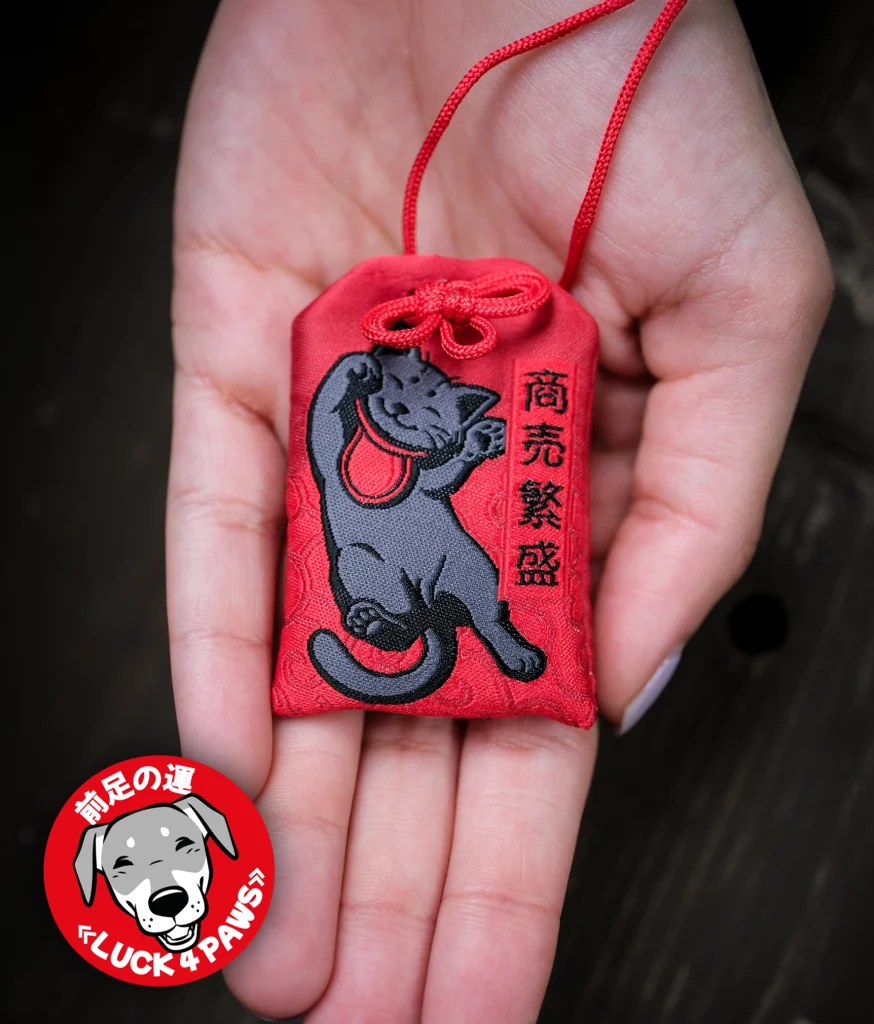
Katsumori (勝守) – Success
Aimed at fostering success and realizing long-held aspirations. Keep it close at hand.
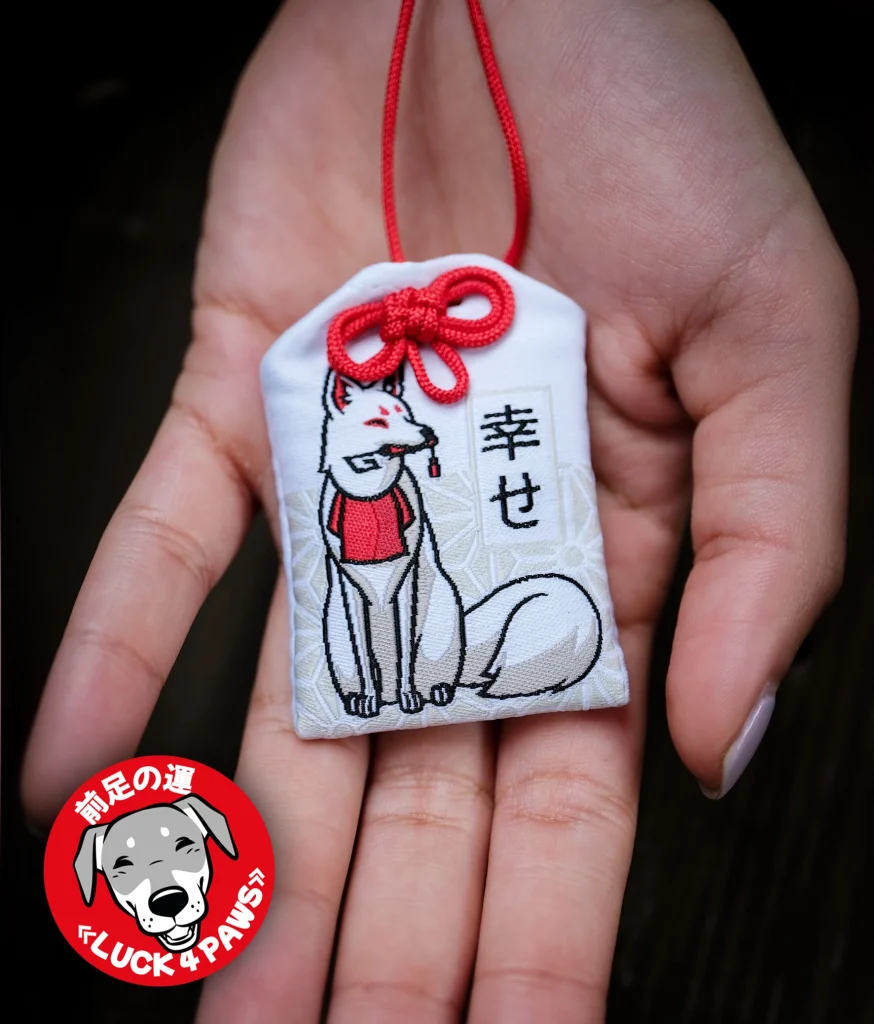
Shiawase (幸せ) – Happiness
Geared towards cultivating a joyful life. Keep it close at hand.
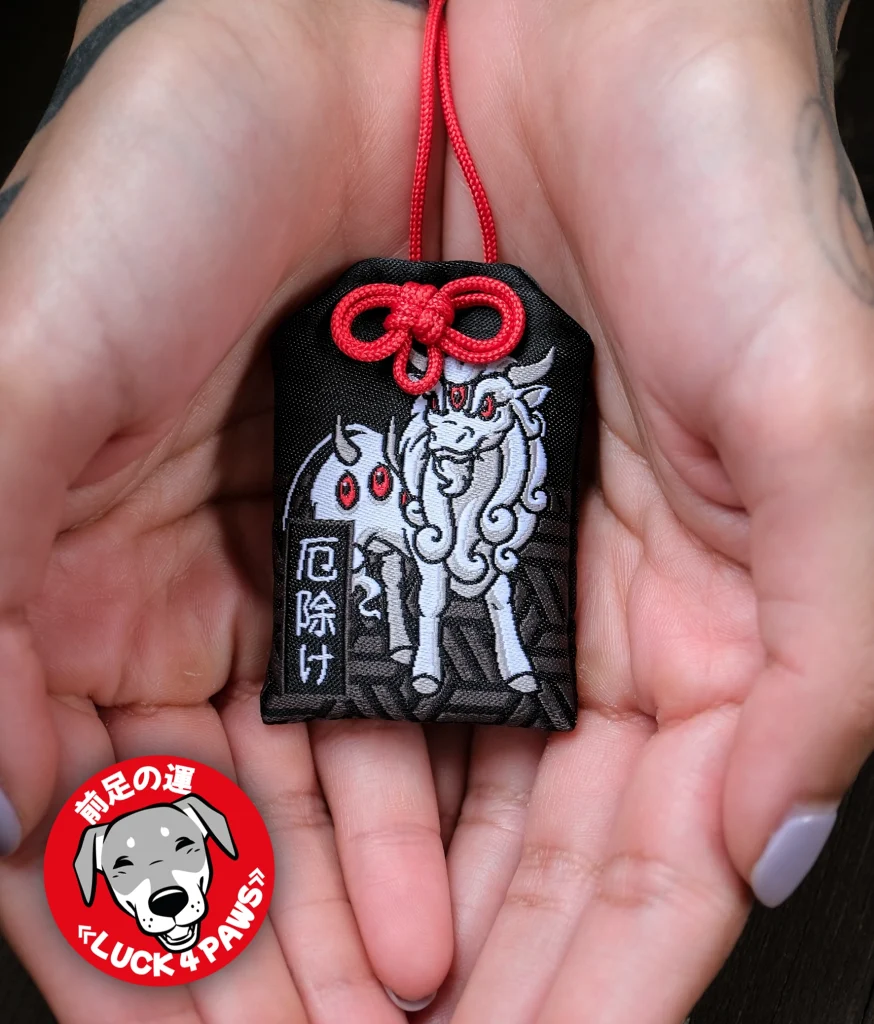
Yakuyoke (厄除け) – Warding off evil
Intended to avert misfortune hindering your endeavors. Keep it close at hand.
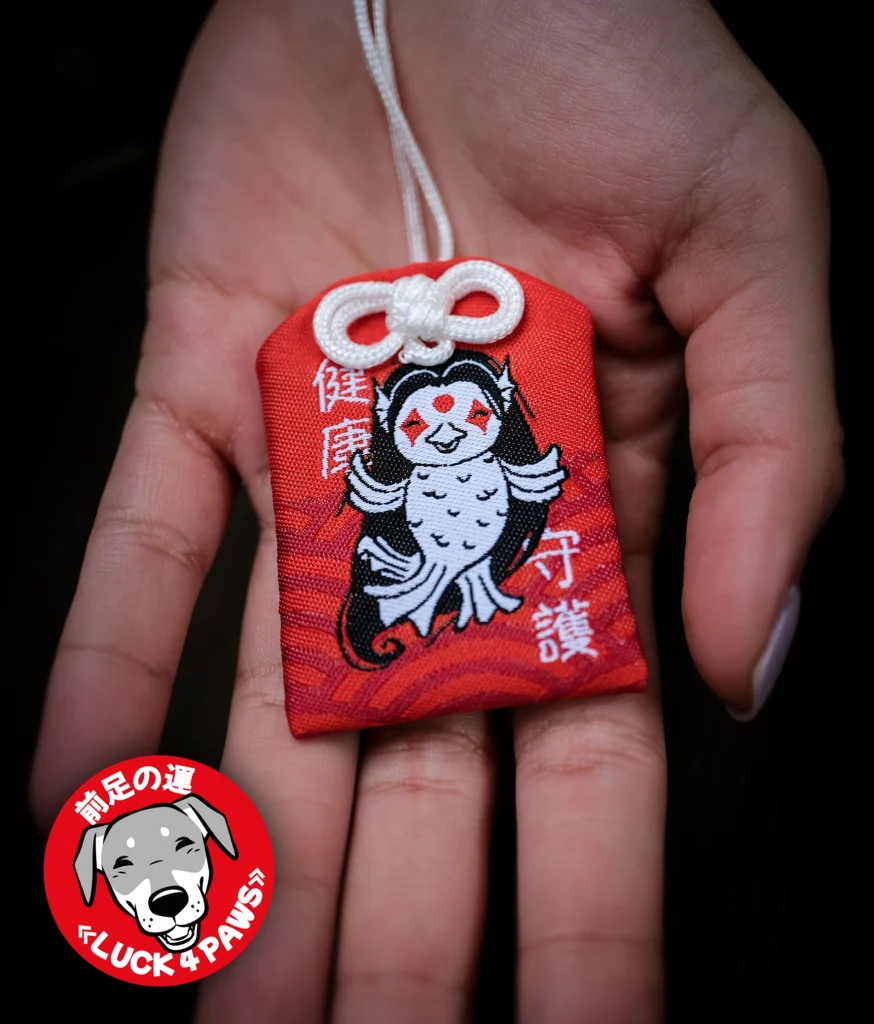
Kenko (健康) – Good health
Promotes overall well-being. Keep it close at hand.
Specific Examples
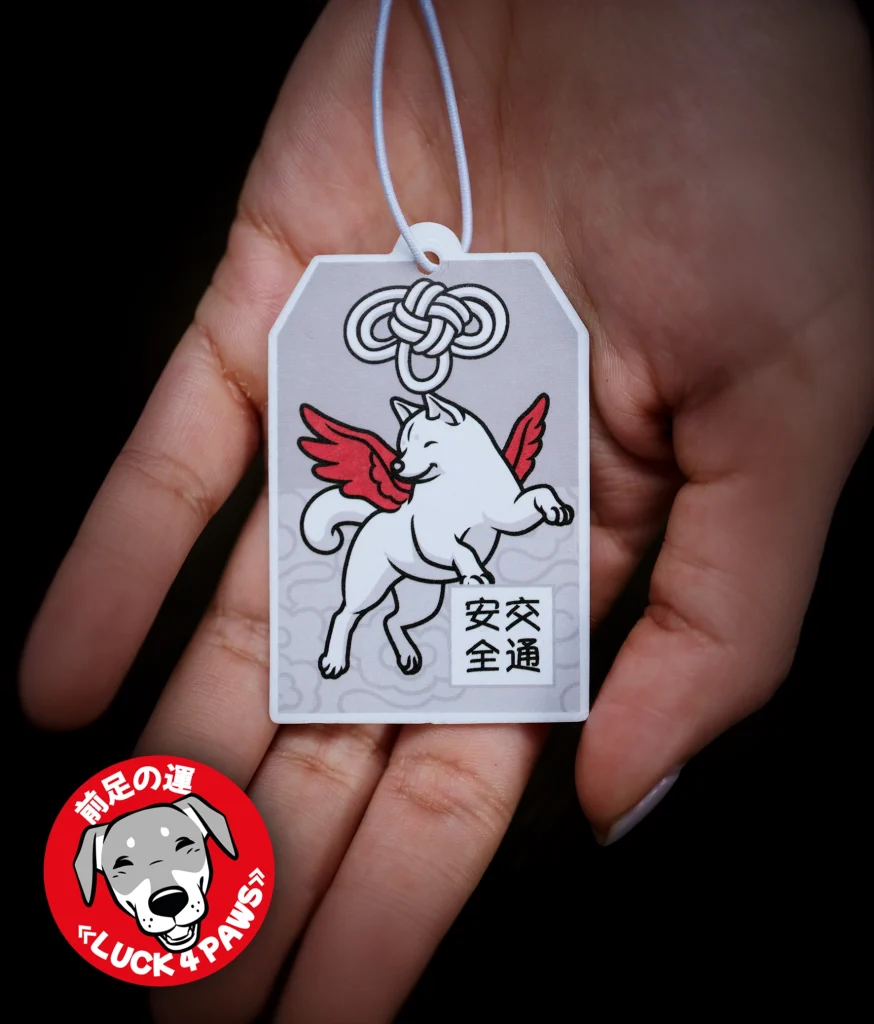
Kotsu-anzen (交通安全) – Traffic safety
Protects drivers and passengers in vehicles. Place it in your vehicle.
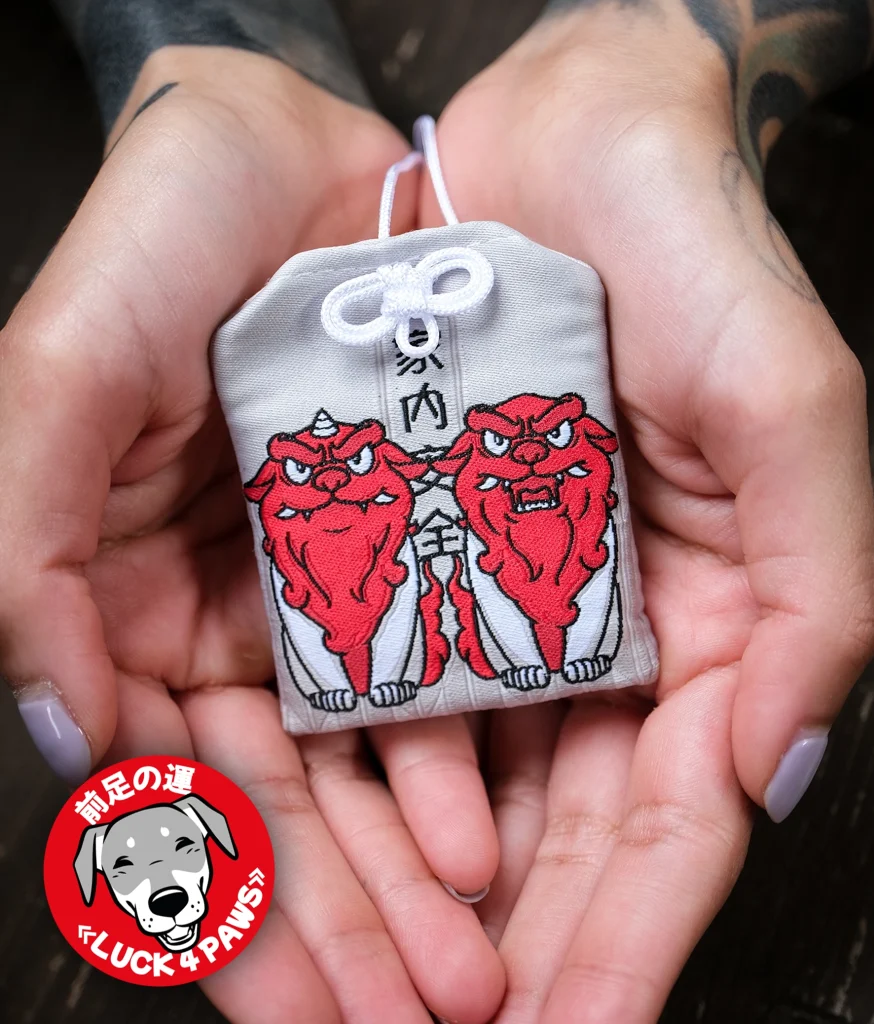
Kanai-anzen (家内安全) – Family safety
Ensures security and prosperity for your family and household. Place it near your family, such as above the front door.
Other Specific Examples:
Anzan (安産)
For a safe and smooth pregnancy and delivery.
Gakugyo-joju (学業成就)
Aids success in academics and passing exams for students and scholars.
Shobai-hanjo (商売繁盛)
Facilitates success in business, finances, and career.
En-musubi (縁結び)
Promotes love; either finding a partner (1 amulet) or safeguarding a relationship (2 amulets).
Byoki-heyu (病気平癒)
Facilitates recovery from illness.








